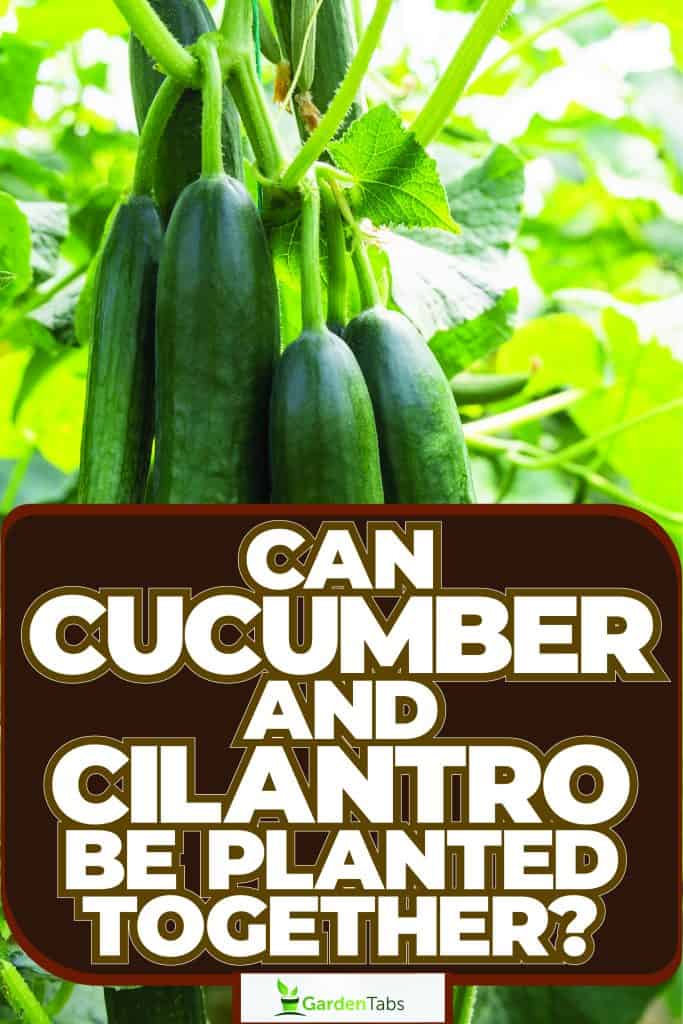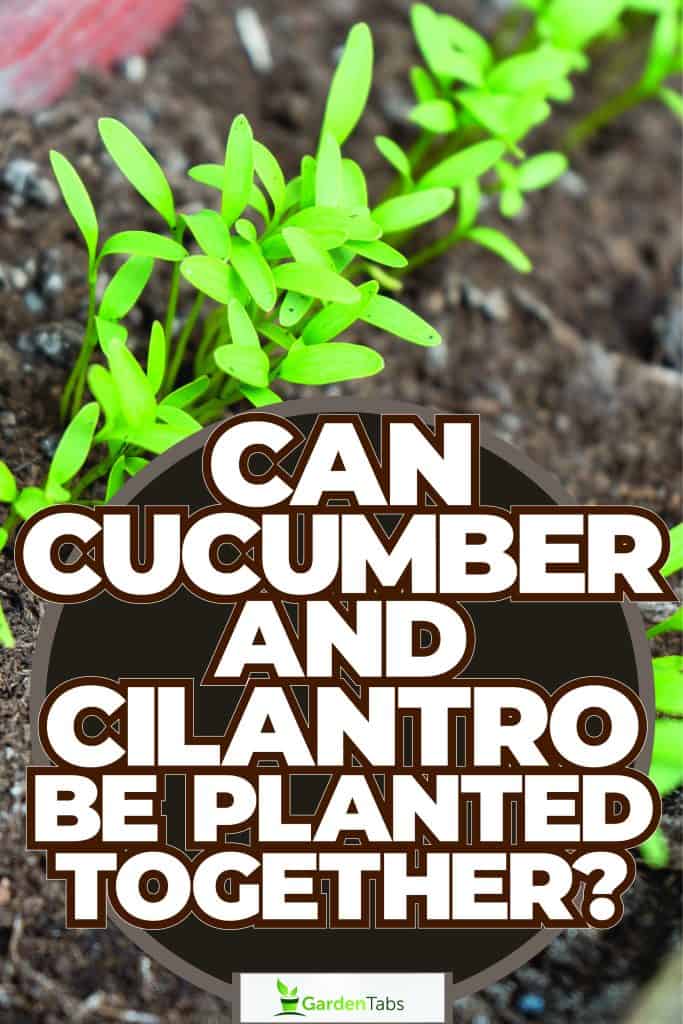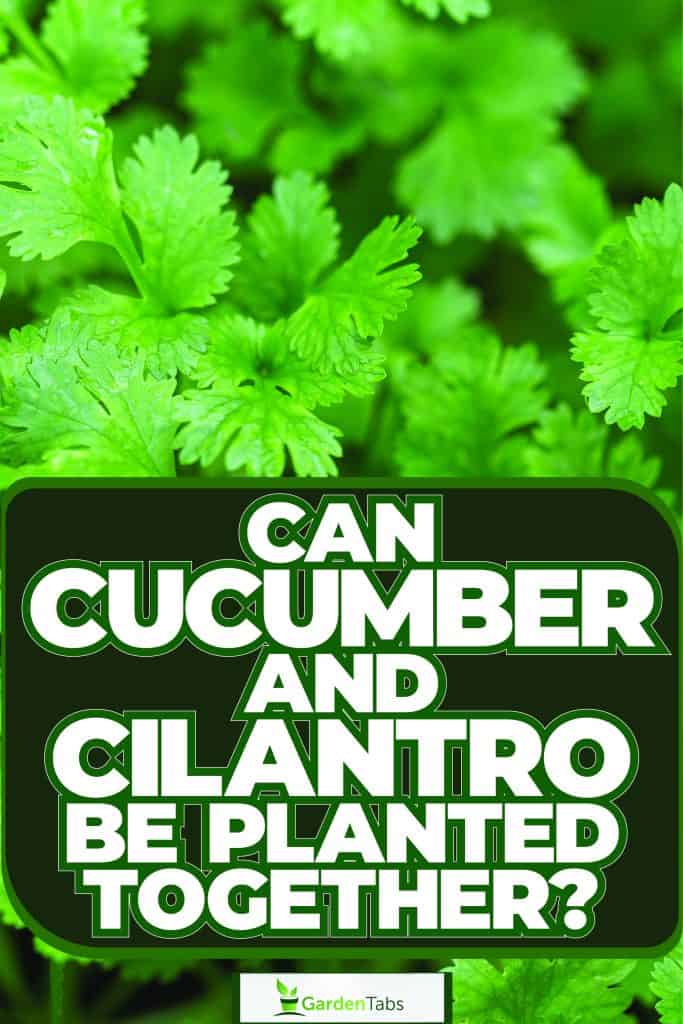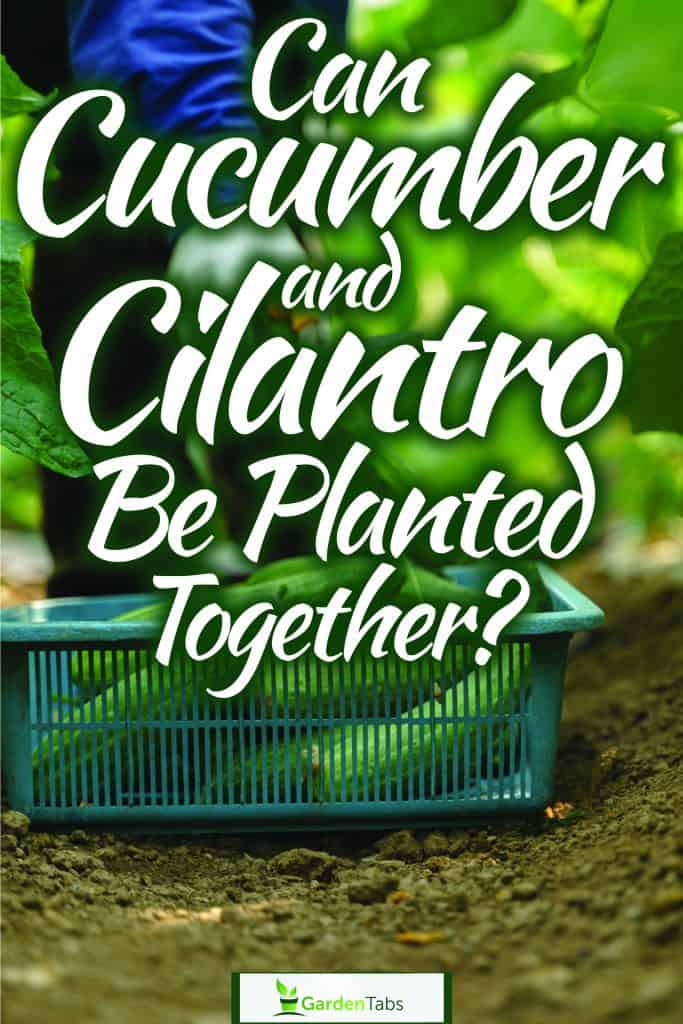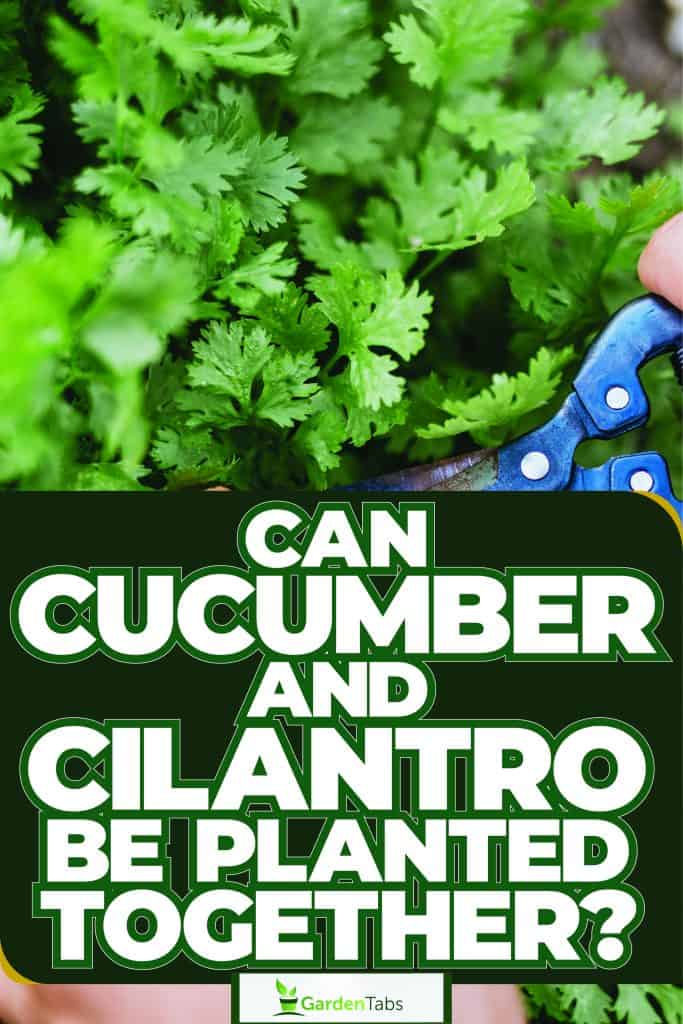When it comes to planning your garden, companion planting is an important concept to consider.
This practice involves growing certain vegetables and herbs together to promote mutual benefits, such as improved growth, enhanced flavors, and natural pest control.
One of the popular combinations you might be wondering about is planting cucumber and cilantro together.
Let's take a closer look at this pairing and its potential benefits.

Can You Plant Cilantro Next to Cucumbers?
Cucumber is a versatile and productive vegetable that many gardeners love to grow.
Meanwhile, cilantro, also known as coriander, offers a unique flavor to various dishes and is popular among home cooks.
Both plants can share some similar growing conditions, making them potential companions for your garden.
However, it's also essential to know how their distinct characteristics can impact each other's growth and flavors.
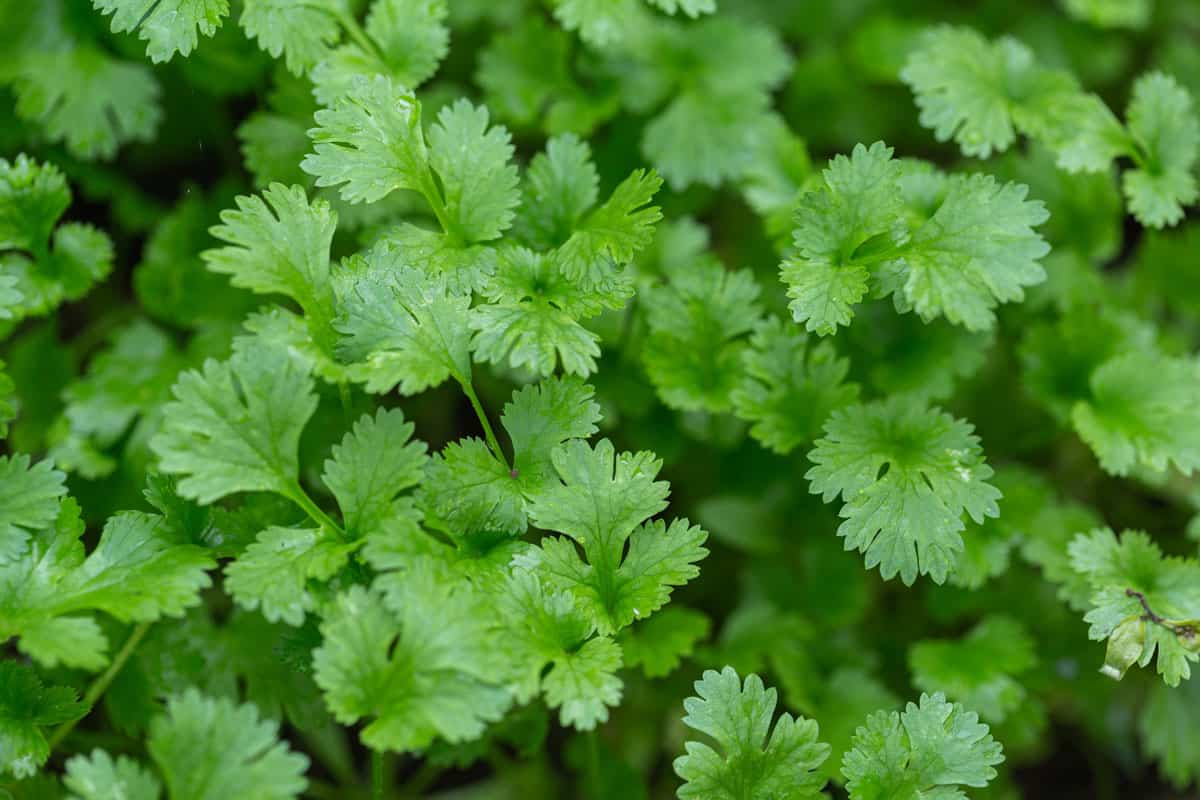
In general, cilantro can be a good companion plant for cucumbers, as its strong scent helps deter pests like aphids from harming your cucumber crops.
However, some suggest that the aroma of cilantro could negatively affect the taste of cucumbers, but this topic is still open for debate.
Growing Requirements for Cucumbers and Cilantro
To create a harmonious garden bed, it's essential to consider the growing requirements of the plants you intend to cultivate.
Let's explore the individual needs of cucumbers and cilantro to showcase their compatibility when planted together.
Cucumbers
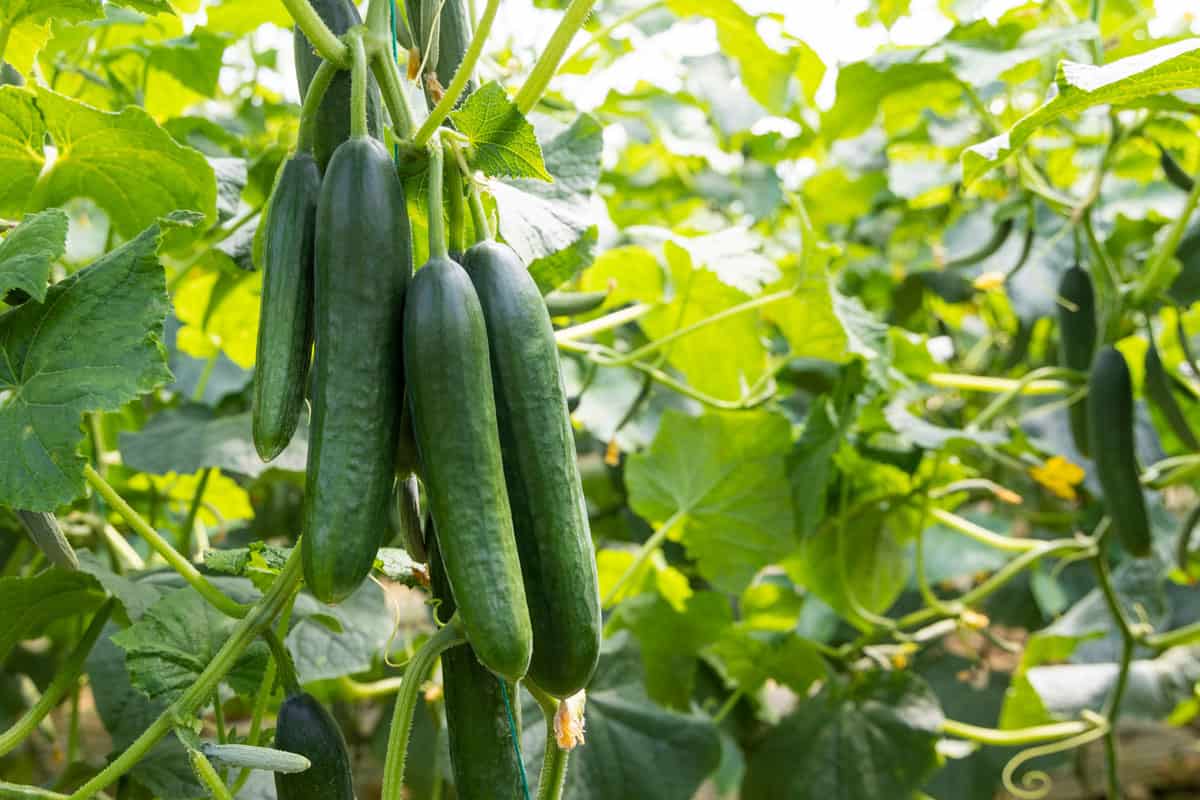
Cucumbers are warm-season vegetables that thrive in sunny locations. Here are some key growing requirements for cucumbers:
Sunlight
Cucumbers require full sun exposure—ideally six to eight hours per day—to promote healthy growth and maximize fruit production.
Soil
Cucumbers prefer well-draining soil rich in organic matter.
Amend the soil with compost or well-rotted manure before planting to enhance fertility and moisture retention.
Watering
Cucumbers have high water needs and benefit from consistent moisture throughout the growing season.
Adequate watering is crucial, especially during fruit development.
Aim for deep watering sessions, ensuring the soil remains evenly moist but not waterlogged.
Fertilizer
Prior to planting, incorporate a balanced, slow-release fertilizer into the soil.
Additionally, you can provide supplemental feeding with a nitrogen-rich fertilizer during the growing season to support healthy foliage growth.
Space
Cucumbers are known for their sprawling vines, so ensure you provide enough space for the plants to spread.
If space is limited, vertical trellises or cages can be used to support the vines and save valuable garden real estate.
Cilantro
Cilantro, an aromatic herb used in various culinary delights, has slightly different growing requirements. Here's what you need to know about growing cilantro:
Sunlight
While cilantro prefers full sun, it can tolerate partial shade, making it a versatile herb that can grow in different areas of your garden.
Soil
Cilantro thrives in well-draining soil with moderate fertility.
Amending the soil with compost before planting can provide the necessary nutrients and improve moisture retention.
Watering
Cilantro prefers slightly drier conditions compared to cucumbers.
Allow the soil to dry out partially between watering sessions to prevent overwatering, which can lead to root rot.
Fertilizer
Cilantro generally does not require heavy feeding.
However, incorporating a balanced fertilizer during soil preparation or using a light application of a nitrogen-rich fertilizer once or twice during the growing season can enhance its growth.
Spacing
Cilantro plants are relatively compact, so they don't require as much space as cucumbers.
Plant them in rows or clusters, leaving a few inches of space between each plant to allow for air circulation.
Plant Similarities and Limitations
Both plants thrive in well-draining soil, benefit from sunlight, and appreciate adequate moisture.
While cucumbers prefer more space and have higher water needs, cilantro can tolerate partial shade and drier conditions.
These differences can be managed by strategic placement and appropriate watering practices, making cucumbers and cilantro excellent companions in the garden.
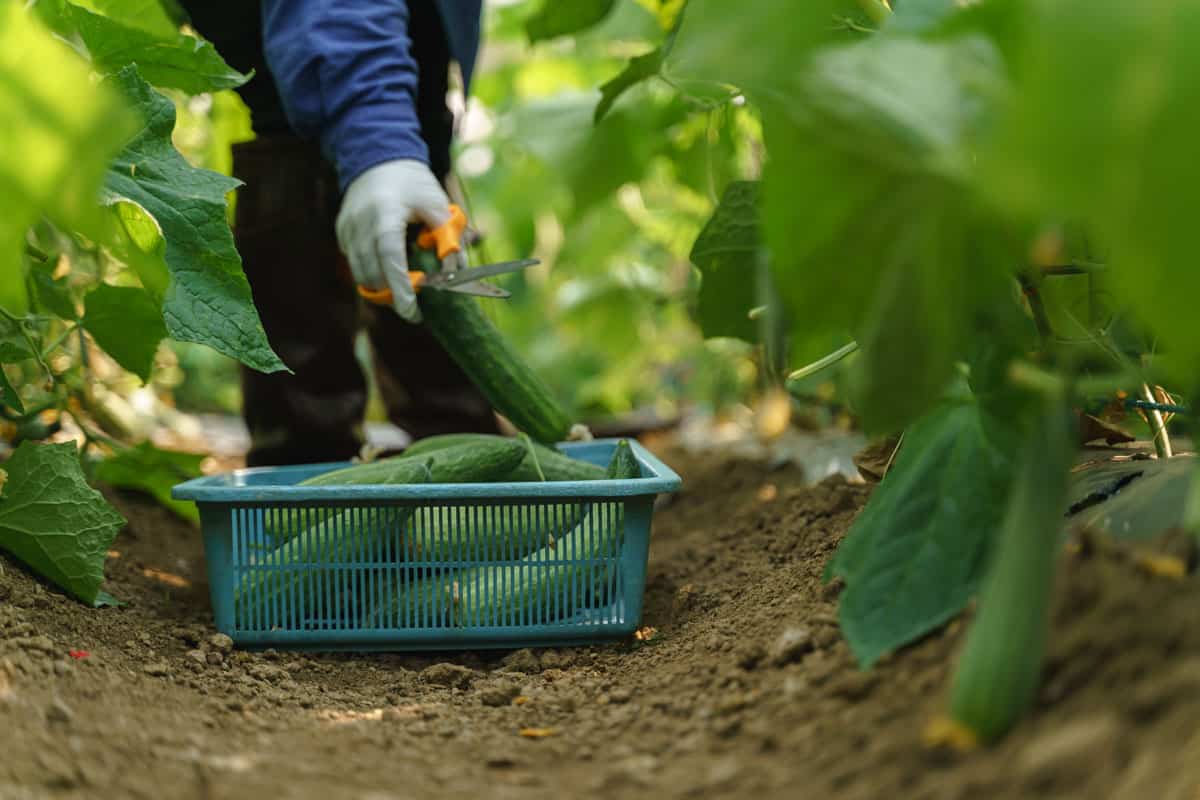
Benefits of Companion Planting
In this section, you'll learn about the advantages of companion planting and how it can benefit your garden when you plant cucumber and cilantro together.
Attract Beneficial Insects
One major benefit of companion planting is its ability to attract beneficial insects to your garden.
Certain plants produce flowers that serve as pollinator food, which can increase the types and number of pollinators—such as bees and butterflies—in your garden.
This leads to better fruit and vegetable production.
Improved Pest Control
Another advantage of companion planting is improved pest control.
Some plants, like cilantro, can repel harmful insects, such as cabbage worms, cucumber beetles, and carrot flies, that can damage your cucumber plants.
By planting them together, you can reduce the need for chemical pesticides and maintain a healthier garden.
Helps Balance Soil
Companion planting also benefits the nutrients in your soil.
Different plants use and return different nutrients to the soil, so planting a diverse selection of plants can help to balance and maintain the quality of your soil.
For example, cilantro can help to add nitrogen to the soil, which can benefit the growth of your cucumber plants.
Shade for Other Plants
Some plants can provide shade for one another, reducing the risk of bolting, especially in warmer climates.
Cucumber plants have large leaves that can help to provide shade for cilantro, which prefers cooler temperatures.
Dealing with Pests
Aphids are a common garden pest that can be a problem for both cucumber and cilantro plants.
One way to deal with aphids is by planting chervil near your cilantro, as it can help repel them.
Marigolds are another option for repelling pests like cucumber beetles, as well as whiteflies and nematodes.
Cucumber plants benefit from being planted near corn and beans, as they help repel various pests, including spider mites and ladybugs.
Additionally, brassicas like broccoli and kale can help keep away beetles and caterpillars.
Some beneficial insects that can help control pests in your garden include:
- Ladybugs: These predators feed on aphids, mites, and whiteflies.
- Parasitic wasps: They lay their eggs on pests like caterpillars and aphids.
- Hoverflies: The larvae of hoverflies feed on aphids and other soft-bodied insects.
To attract these beneficial insects, you can plant flowers like sweet alyssum, cosmos, and zinnias in your garden.
When it comes to planting herbs alongside cucumber and cilantro, consider using rosemary, thyme, and lavender, as they can help deter a variety of pests.

However, make sure to keep fennel away from your cucumber and cilantro plants, as it tends to attract harmful insects like the Japanese beetle.
Snails and pill bugs, which can be problematic for cucumbers, can be deterred by placing crushed eggshells or a barrier of diatomaceous earth around your plants.
For bigger pests such as moths, consider placing netting or row covers over your plants to prevent them from laying eggs.
Or you can try this hack to protect your produce: Watch This Simple Gardening Hack That Will Save Your Tomatoes From Pests
Plant with Love and Caution
When planting cilantro and cucumbers together, remember to be mindful of their individual growing requirements.
While there may be a few considerations to keep in mind, planting cilantro and cucumbers together can bring about several benefits for you and your garden.
Just make sure to observe their individual needs for a successful and thriving companion planting experience.
Thank you for reading through! While we have your attention, check out these other helpful articles on growing cucumbers:

